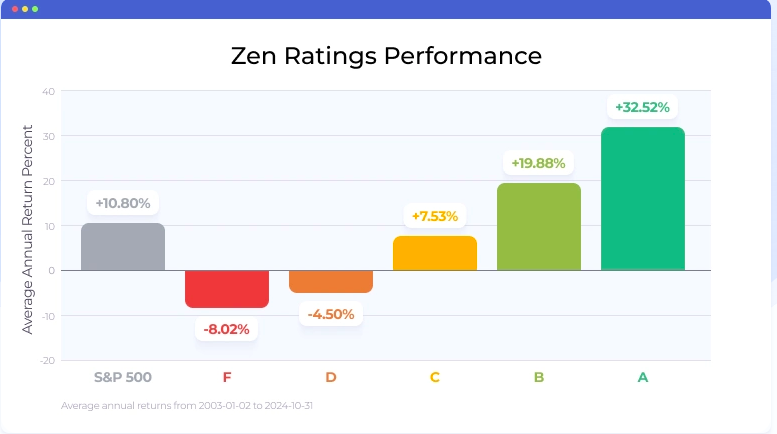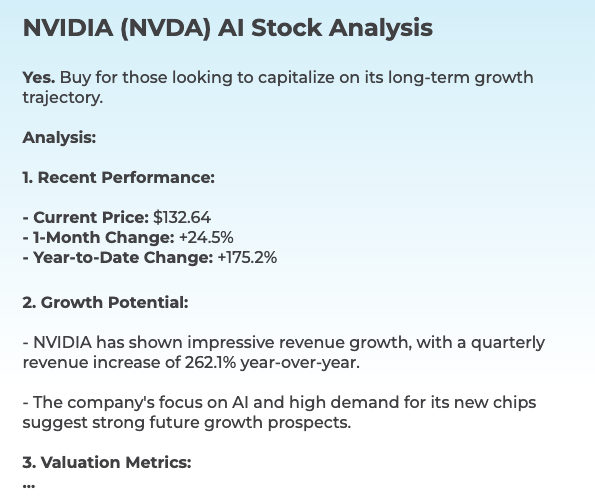20 Handy Tips On Choosing AI Stock Trading Platform Sites
20 Handy Tips On Choosing AI Stock Trading Platform Sites
Blog Article
Top 10 Suggestions On How To Evaluate The Integration Of Ai Platforms For Predicting And Analyzing Stocks And Their Compatibility
AI platforms for trading stocks that can predict and analyze stocks based on AI should be compatible with one another. A platform that integrates seamlessly into your current workflows and tools can boost efficiency and increase productivity. Here are the top 10 tips to assess compatibility and integration.
1. Check Brokerage Integration
Supported brokers: Ensure that the platform integrates with the brokerage you prefer account or trading account.
Trade execution: Check whether your platform permits you to make trades directly through an integrated broker.
Account synchronization: Determine if the platform can sync account balances, positions, and transaction history in real-time.
2. Check the availability of APIs
API access - Check that the platform comes with an API that allows developers to develop customized tools or automate work processes.
API documentation: Look to see if there are examples of how the API is used.
Rate limits: Check if your API has reasonable rate limits that are able to handle the amount of use you anticipate.
3. Integration of Third-Party Tools
Popular tools See if there are any integrations between the platform and tools such as Google Sheets, Excel, or trading robots.
Data export and import: Ensure that the platform allows easy export/import data to and from other tools.
Extensions/Plugins: Check if the platform is compatible with plugins or extensions for additional functionality.
4. Test Compatibility for Operating Systems
Desktop compatibility: Make sure the platform is compatible with your operating system of choice (Windows, macOS or Linux).
Mobile compatibility - Search to see if the platform has a mobile application available for iOS as well as Android.
Web-based accessibility: To increase flexibility, verify that the interface of the platform is accessible via a web browser.
5. Evaluation of Data Integration Capabilities
Data sources. Check that the platform is equipped with multiple data integrations (e.g. data providers for social media, market sentiment news feeds, etc.).
Real-time Data Feeds: Look to see if your platform provides real-time analysis.
Find out if your platform allows historical data import for backtesting or analysis.
6. Assessment of Cloud and On-Premise compatibility
Cloud-based platform: Accessible from anywhere, with an internet connection.
On-premise solutions. If you are looking to deploy on-premise be sure to check whether your platform supports it.
Take a look at the hybrid model. It is a hybrid model that combines on-premise and cloud capabilities.
7. Make sure to check for Cross Platform Syncronization
Device synchronization: Ensure your platform syncs settings and data across devices (desktop, mobile, tablet).
Real-time updates: Verify if any changes made on one device are immediately reflected on others.
Offline access: Check if the platform allows only limited access to data or functions when offline.
8. Examine the compatibility of trading Strategies
Trading strategies that are automated or algorithmic must be backed by the trading platform.
Custom indicators: Verify whether the platform supports the use of custom technical indicators or scripts.
Backtesting strategy: Find out whether your platform permits you to backtest trading strategies with historical data.
9. Assess Security and Compliance
Data encryption: Ensure the platform is using encryption to protect data during transit and at rest.
Authentication Verify whether the platform is secure in terms for authentication (e.g. Two-factor authentication).
Regulation compliance: Determine if the platform complies with relevant regulations (e.g., GDPR, FINRA, SEC).
10. Test Scalability and Performance
Scalability: Ensure that the platform is able to handle the increasing amount of data and users as your needs expand.
Performance during load conditions: Determine if the platform remains responsive during high-volatility market conditions.
Resource usage: Check whether the system is efficient in using the resources of the system (CPU, memory, bandwidth).
Bonus Tips
Feedback from users: Use testimonials from users to assess the platform integration capabilities.
Trial period: Take advantage of a free trial or demo to test the system's integration with your existing tools and workflows.
Customer support: Ensure that the platform offers a robust support in case of integration issues.
If you follow these guidelines to evaluate the compatibility and integration of AI stock-predicting and analyzing platforms and ensure that they integrate seamlessly with your existing systems and enhance the efficiency of your trading. Read the most popular your input here on ai for stock trading for website info including market ai, using ai to trade stocks, trading ai, ai investing platform, ai for stock predictions, ai for investment, ai for investment, ai for investment, chart ai trading assistant, market ai and more.
Top 10 Tips On Assessing The Scalability Of Ai Platform For Analyzing And Predicting Trading Stocks
To ensure that AI-driven stock trading and prediction platforms can scale as well, they should be able to deal with the growing volume of data and complexity in markets, as well as customer demands. Here are 10 top ways to assess the scalability.
1. Evaluate Data Handling Capacity
Tips: Ensure that the platform you're considering can handle and analyze large datasets.
What is the reason? Scalable platforms should be able handle growing data volumes with no performance loss.
2. Test Real-Time Processing Capabilities
Tips: Make sure you check the platform's ability to process real-time information streams, such live stock prices or breaking news.
Why: The real-time analysis of trading decisions is vital since delays can cause to you missing out on opportunities.
3. Cloud Infrastructure and Elasticity
TIP: Check whether the platform is cloud-based infrastructure (e.g., AWS, Google Cloud, Azure) and is able to scale resources dynamically.
Why: Cloud platforms are flexible, and they can be scaled up or down according to demands.
4. Algorithm Efficiency
Tips: Assess the computational efficiency of the AI models (e.g., deep learning or reinforcement learning) used for predictions.
Why: Complex algorithms can become resource-intensive, so optimizing them is key to scaling.
5. Study parallel processing and distributed computing
Tip: Check if the platform uses distributed computing or parallel processing frameworks (e.g., Apache Spark, Hadoop).
The reason: These advanced technologies allow for faster analysis of data and processing across multiple nodes.
Review API Integration, and Interoperability
Test the integration capabilities of the platform with APIs that are external to the platform.
What's the reason? Seamless integration guarantees the platform can adapt to the latest information sources and environments for trading.
7. Analyze User Load Handling
Make use of a high-traffic simulation in order to check how the platform responds when under stress.
Why is that a platform that can scale should be able to keep up with performance as users increase.
8. Evaluate Model Retraining and Adaptability
Tip: Assess how frequently and effectively the AI models are trained with new data.
Why: Markets evolve, and models have to change quickly to ensure the accuracy.
9. Check for Fault Tolerance & Redundancy
Tip: Check that the platform is equipped with failover mechanisms, and has redundancy in the event of software or hardware malfunctions.
Why is downtime so costly for trading. So fault tolerance is crucial to the scalability.
10. Monitor Cost Efficiency
Tip: Evaluate the cost of scaling the platform, which includes cloud resources, storage for data, and computational power.
Why: Scalability should not result in an unsustainable price which is why balancing performance with expense is critical.
Bonus tip: Future-proofing
Be sure that the platform is able to incorporate new technologies (e.g. quantum computing or advanced NLP) and is able to adjust to regulatory changes.
By focusing your focus on these elements, you can accurately assess the scalability AI prediction as well as trading platforms. This guarantees that they are robust, efficient, and ready for further growth. Follow the recommended ai stock investing advice for more advice including stock predictor, ai trading tool, invest ai, chart ai trading, best ai trading platform, free ai tool for stock market india, ai copyright signals, ai options trading, stocks ai, ai options trading and more.